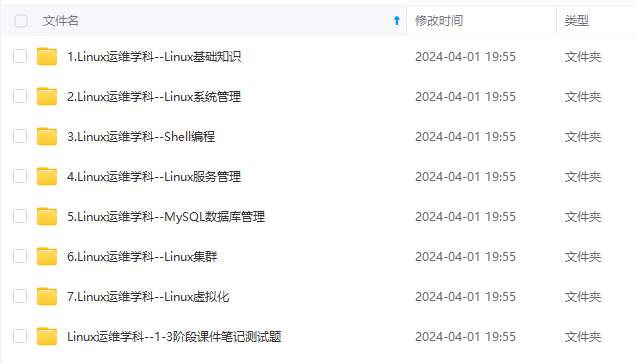使用kubeadm安装Kubernetes集群(1.23.3)
准备3台虚拟机(CentOS-7.6),在/etc/hosts中增加如下内容172.18.66.201 k8s-master172.18.66.202 k8s-node1172.18.66.203 k8s-node2安装必要的基础工具包,不赘述安装docker-ce的yum repo(所有服务器)wget https://mirrors.aliyun.com/docker-ce/linux/cen
- 准备3台虚拟机(CentOS-7.6),在/etc/hosts中增加如下内容
- 172.18.66.201 k8s-master
- 172.18.66.202 k8s-node1
- 172.18.66.203 k8s-node2
- 安装必要的基础工具包,不赘述
- 安装docker-ce的yum repo(所有服务器)
wget https://mirrors.aliyun.com/docker-ce/linux/centos/docker-ce.repo /etc/yum.repos.d/docker-ce.repo
yum makecache fast
yum repolist
- 关闭swap、selinux、firewalld(所有服务器)
swapoff -a && sed -i '/ swap / s/^\(.*\)$/#\1/g' /etc/fstab
setenforce 0 && sed -i 's/^SELINUX=.*/SELINUX=disabled/' /etc/selinux/config
systemctl stop firewalld && systemctl disable firewalld
- 配置主机名解析(所有服务器)
cat >> /etc/hosts <<EOF
172.18.66.201 k8s-master
172.18.66.202 k8s-node1
172.18.66.203 k8s-node2
185.199.108.133 raw.githubusercontent.com
EOF
githubusercontent国内访问有问题,在ipaddress.com上解析一下也配进来。
- 安装docker(所有服务器)
yum install -y docker-ce
systemctl enable docker
systemctl restart docker
- 配置内核参数(所有服务器)
cat > /etc/sysctl.d/k8s.conf <<EOF
net.bridge.bridge-nf-call-ip6tables = 1
net.bridge.bridge-nf-call-iptables = 1
EOF
sysctl --system
- 安装kubectl、kubeadm、kubelet(所有服务器)
先配置yum源(阿里)
cat <<EOF > /etc/yum.repos.d/kubernetes.repo
[kubernetes]
name=Kubernetes
baseurl=https://mirrors.aliyun.com/kubernetes/yum/repos/kubernetes-el7-x86_64/
enabled=1
gpgcheck=1
repo_gpgcheck=1
gpgkey=https://mirrors.aliyun.com/kubernetes/yum/doc/yum-key.gpg https://mirrors.aliyun.com/kubernetes/yum/doc/rpm-package-key.gpg
EOF
yum install -y kubelet kubeadm kubectl
cat >> /etc/sysconfig/kubelet <<EOF
KUBELET_EXTRA_ARGS="--fail-swap-on=false"
EOF
systemctl enable kubelet
- 修改docker配置(所有服务器)
cat > /etc/docker/daemon.json <<EOF
{
"exec-opts": ["native.cgroupdriver=systemd"],
"log-driver": "json-file",
"log-opts": {
"max-size": "100m"
},
"storage-driver": "overlay2",
"storage-opts": [
"overlay2.override_kernel_check=true"
],
"registry-mirrors": ["https://pf5f57i3.mirror.aliyuncs.com"]
}
EOF
systemctl daemon-reload
systemctl restart docker
- 初始化k8s集群(master节点)
kubeadm init --apiserver-advertise-address=172.18.66.201 --service-cidr=10.10.0.0/16 --pod-network-cidr=10.122.0.0/16 --ignore-preflight-errors=Swap --image-repository=registry.aliyuncs.com/google_containers
输出如下:
[init] Using Kubernetes version: v1.23.3
[preflight] Running pre-flight checks
[preflight] Pulling images required for setting up a Kubernetes cluster
[preflight] This might take a minute or two, depending on the speed of your internet connection
[preflight] You can also perform this action in beforehand using ‘kubeadm config images pull’
[certs] Using certificateDir folder “/etc/kubernetes/pki”
[certs] Generating “ca” certificate and key
[certs] Generating “apiserver” certificate and key
[certs] apiserver serving cert is signed for DNS names [k8s-master kubernetes kubernetes.default kubernetes.default.svc kubernetes.default.svc.cluster.local] and IPs [10.10.0.1 172.18.66.201]
[certs] Generating “apiserver-kubelet-client” certificate and key
[certs] Generating “front-proxy-ca” certificate and key
[certs] Generating “front-proxy-client” certificate and key
[certs] Generating “etcd/ca” certificate and key
[certs] Generating “etcd/server” certificate and key
[certs] etcd/server serving cert is signed for DNS names [k8s-master localhost] and IPs [172.18.66.201 127.0.0.1 ::1]
[certs] Generating “etcd/peer” certificate and key
[certs] etcd/peer serving cert is signed for DNS names [k8s-master localhost] and IPs [172.18.66.201 127.0.0.1 ::1]
[certs] Generating “etcd/healthcheck-client” certificate and key
[certs] Generating “apiserver-etcd-client” certificate and key
[certs] Generating “sa” key and public key
[kubeconfig] Using kubeconfig folder “/etc/kubernetes”
[kubeconfig] Writing “admin.conf” kubeconfig file
[kubeconfig] Writing “kubelet.conf” kubeconfig file
[kubeconfig] Writing “controller-manager.conf” kubeconfig file
[kubeconfig] Writing “scheduler.conf” kubeconfig file
[kubelet-start] Writing kubelet environment file with flags to file “/var/lib/kubelet/kubeadm-flags.env”# .bash_profile
[kubelet-start] Writing kubelet configuration to file “/var/lib/kubelet/config.yaml”
[kubelet-start] Starting the kubelet
[control-plane] Using manifest folder “/etc/kubernetes/manifests”
[control-plane] Creating static Pod manifest for “kube-apiserver”
[control-plane] Creating static Pod manifest for “kube-controller-manager”
[control-plane] Creating static Pod manifest for “kube-scheduler”
[etcd] Creating static Pod manifest for local etcd in “/etc/kubernetes/manifests”
[wait-control-plane] Waiting for the kubelet to boot up the control plane as static Pods from directory “/etc/kubernetes/manifests”. This can take up to 4m0s
[apiclient] All control plane components are healthy after 23.670565 seconds
[upload-config] Storing the configuration used in ConfigMap “kubeadm-config” in the “kube-system” Namespace
[kubelet] Creating a ConfigMap “kubelet-config-1.23” in namespace kube-system with the configuration for the kubelets in the cluster
NOTE: The “kubelet-config-1.23” naming of the kubelet ConfigMap is deprecated. Once the UnversionedKubeletConfigMap feature gate graduates to Beta the default name will become just “kubelet-config”. Kubeadm upgrade will handle this transition transparently.
[upload-certs] Skipping phase. Please see --upload-certs
[mark-control-plane] Marking the node k8s-master as control-plane by adding the labels: [node-role.kubernetes.io/master(deprecated) node-role.kubernetes.io/control-plane node.kubernetes.io/exclude-from-external-load-balancers]
[mark-control-plane] Marking the node k8s-master as control-plane by adding the taints [node-role.kubernetes.io/master:NoSchedule]
[bootstrap-token] Using token: sfbloh.begpbqlqq6qpzhej
[bootstrap-token] Configuring bootstrap tokens, cluster-info ConfigMap, RBAC Roles
[bootstrap-token] configured RBAC rules to allow Node Bootstrap tokens to get nodes
[bootstrap-token] configured RBAC rules to allow Node Bootstrap tokens to post CSRs in order for nodes to get long term certificate credentials
[bootstrap-token] configured RBAC rules to allow the csrapprover controller automatically approve CSRs from a Node Bootstrap Token
[bootstrap-token] configured RBAC rules to allow certificate rotation for all node client certificates in the cluster
[bootstrap-token] Creating the “cluster-info” ConfigMap in the “kube-public” namespace
[kubelet-finalize] Updating “/etc/kubernetes/kubelet.conf” to point to a rotatable kubelet client certificate and key
[addons] Applied essential addon: CoreDNS
[addons] Applied essential addon: kube-proxyYour Kubernetes control-plane has initialized successfully!
To start using your cluster, you need to run the following as a regular user:
mkdir -p $HOME/.kube
sudo cp -i /etc/kubernetes/admin.conf $HOME/.kube/config
sudo chown (id−u):(id -u):(id−u):(id -g) $HOME/.kube/configAlternatively, if you are the root user, you can run:
export KUBECONFIG=/etc/kubernetes/admin.conf
You should now deploy a pod network to the cluster.
Run “kubectl apply -f [podnetwork].yaml” with one of the options listed at:
https://kubernetes.io/docs/concepts/cluster-administration/addons/Then you can join any number of worker nodes by running the following on each as root:
kubeadm join 172.18.66.201:6443 --token sfbloh.begpbqlqq6qpzhej
–discovery-token-ca-cert-hash sha256:0feac442bdcaa7e1cddedc439b17c43660fab1c21a6eff023462e8fb1d8696b8
- 安装网络(master节点)
用calico。
flannel有问题,后来配置dapr的时候老是io timeout,原因未知
kubectl apply -f https://docs.projectcalico.org/manifests/calico.yaml
**上面init的输出里给的addons的链接点进去,可以转到calico项目主页
- 节点加入集群(node1、node2)
kubeadm join 172.18.66.201:6443 --token sfbloh.begpbqlqq6qpzhej --discovery-token-ca-cert-hash sha256:0feac442bdcaa7e1cddedc439b17c43660fab1c21a6eff023462e8fb1d8696b8 --ignore-preflight-errors=Swap
上面init的输出最后给的命令,加上跳过swap错误的选项
更多推荐
 已为社区贡献1条内容
已为社区贡献1条内容









所有评论(0)